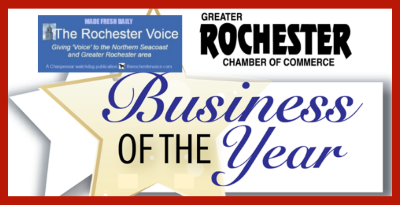
FARMINGTON - On a typically cool Sunday afternoon in early March, 24 hikers enjoyed a tour around Bob and Debbie Leary's property on Hornetown Road in Farmington, in an event sponsored by Moose Mountains Regional Greenways (MMRG) and the Farmington Conservation Commission (CC).
MMRG is currently working with the Learys to place a conservation easement on the 63-acre Leary Field & Forest and this was an opportunity for the public to see the wildlife habitats, working farm and forest land, walking trails and scenic views that will be protected through conserving this land.
MMRG Executive Director Patti Connaughton-Burns handed out a trails map and spoke to the gathered group about MMRG's unique opportunity to conserve the land and ultimately become owner of these 63 acres plus an adjacent 77-acre forested parcel of the Leary's farm, already protected by a federal Wetland Reserve Program conservation easement. The combined 140 conserved acres will provide public access on 2.1 miles of well-groomed trails and protect prime agricultural soils and valuable watershed.
Forester Wendy Scribner pointed out a variety of plants and signs of wildlife and talked about how this property supports a diversity of both. In one attention-getting moment, a vole dashed across the snow, then dove into one of its tunnels underneath. Deer and turkey tracks were plentiful as well as turkey feathers. These woodlands also support roaming fisher, bobcat, and moose and the fields provide important habitat for northern harriers to hunt and for breeding Bobolinks, both of which have been declining in numbers in New Hampshire in recent years.
Bob Leary showed the group his sugarhouse and described the history and details of tapping sugar maples to make syrup in their 'Forty to One' operation, a reference to the ratio of the number of gallons of sap that it takes to make one gallon of syrup. Neighbor Rodney Thompson contributed a photo of his ancestors boiling sap, a tradition that colonists first learned from Native Americans. Scribner added information about best management practices to ensure the long and productive life of the maple trees in the sugarbush.
The outing also included stops at an historic stone bridge and an old cemetery within the Wetlands Reserve. At the top of the hay field, hikers enjoyed scenic views as far as Portsmouth, despite overcast skies.
(Virginia Long is a publicist for MMRG)












